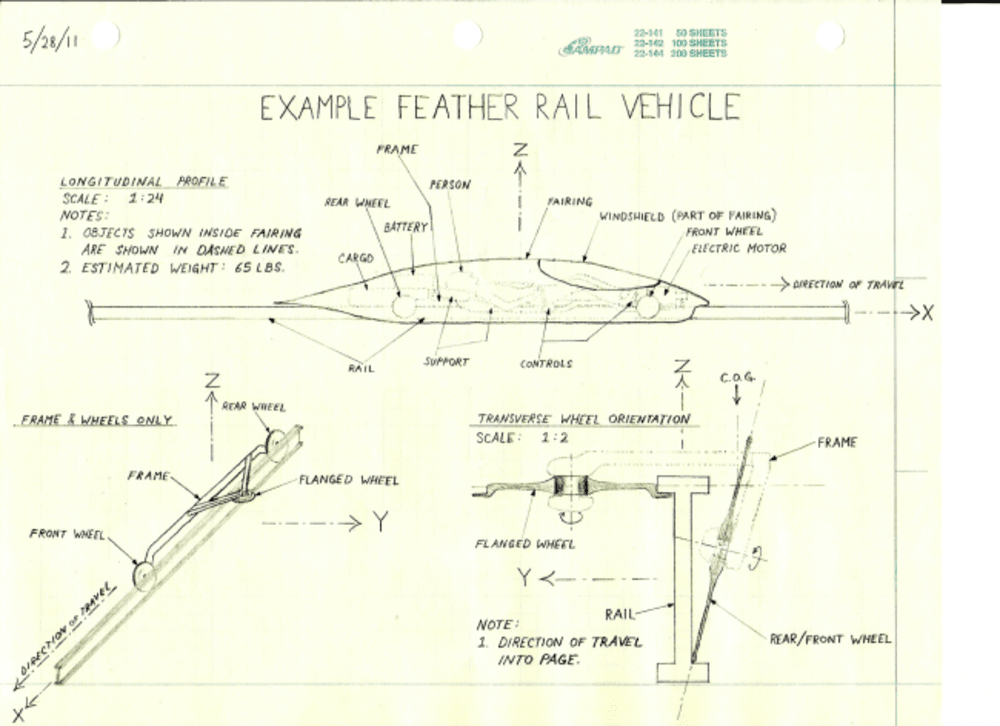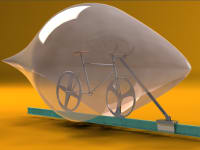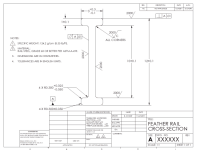A fundamentally new system of transportation, originally conceived in 2007, is described herein.
This system, called "feather rail," is different from cars, trains, or bicycles, but is most similar to a combination of the latter two. The most essential component is the infrastructure: we specify a steel rail, akin to a small I-beam, attached to a grade-separated right-of-way. Each lane consists of a single rail, thus making it a true monorail system. The maximum load is 500 lbs per 10 feet of live load, implying a very light civil design resembling that for pedestrian traffic. Fine breaks in the rail allow vehicles to overtake and merge to different paths, preserving the freedom of navigation.
There are no limits on what vehicles may be designed for use on the system, except for a single requirement: no combustion engines.
We provide three illustrations:
The first is a drawing of the rail cross section, representing the infrastructure.
The second is a three-wheeled vehicle, designed specifically for the rail. This design can be built with metal wheels, minimizing rolling resistance.
The third is a retrofitted bicycle.
Because vehicles using the monorail are guided, rather than steered, aerodynamic attachments can be easily attached to vehicles, further improving efficiency. Thus, for the three-wheeled design, both rolling resistance and wind drag are minimized.
The advantages of this system are numerous, and may have far-reaching impacts. First, vehicles are extremely efficient: using the power it takes to walk will propel the three-wheeled vehicle to 30 mph. Second, the system allows for complete backward-compatibility with bicycles on the slower lanes, with simple add-ons. Third, the merging mechanism preserves the complete individual freedom of navigation which, so far, has not seen successful duplication outside roadways. Fourth, vehicles are light enough to lift by hand: seamless integration with individual lockers, located at stations, allows for seamless access to intermodal centers or the final destinations outright. Retrofitted bicycles need only disconnect the balancing add-on and fairing.
It is the authors' true wish to realize the full and unrestricted rapid propagation of this transportation system to solve the world's immediate needs. The heavy, mechanized transport modes of the 19th, 20th, and early 21st century must yield to lighter alternatives which are equal in terms of speed and carrying capacity, but far more efficient by the order-of-magnitude scales. This system can meet that requirement, by at least two orders of magnitude with profound ramifications on greenhouse gas emissions, climate change, and human livelihood.
For a more complete description, please visit:
http://www.box.net/shared/103eqgbdujtnp6hrnj82
Like this entry?
-
About the Entrant
- Name:Brian Chow
- Type of entry:teamTeam members:Brian Chow
Handoko Hadisurya
Javier Hernandez - Software used for this entry:Solidworks
- Patent status:none








